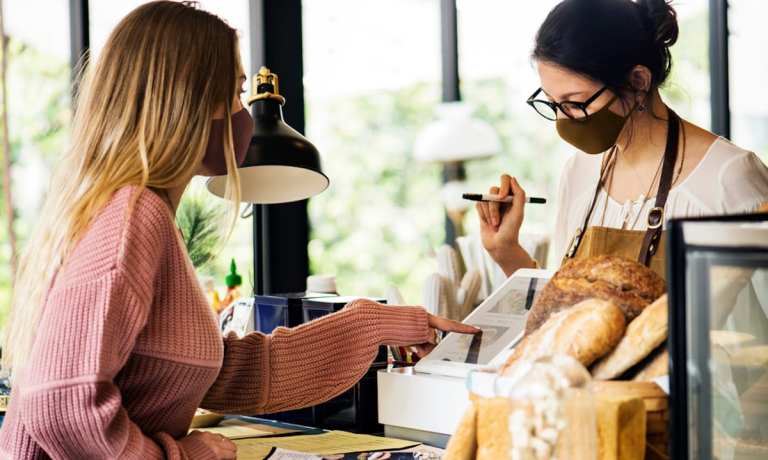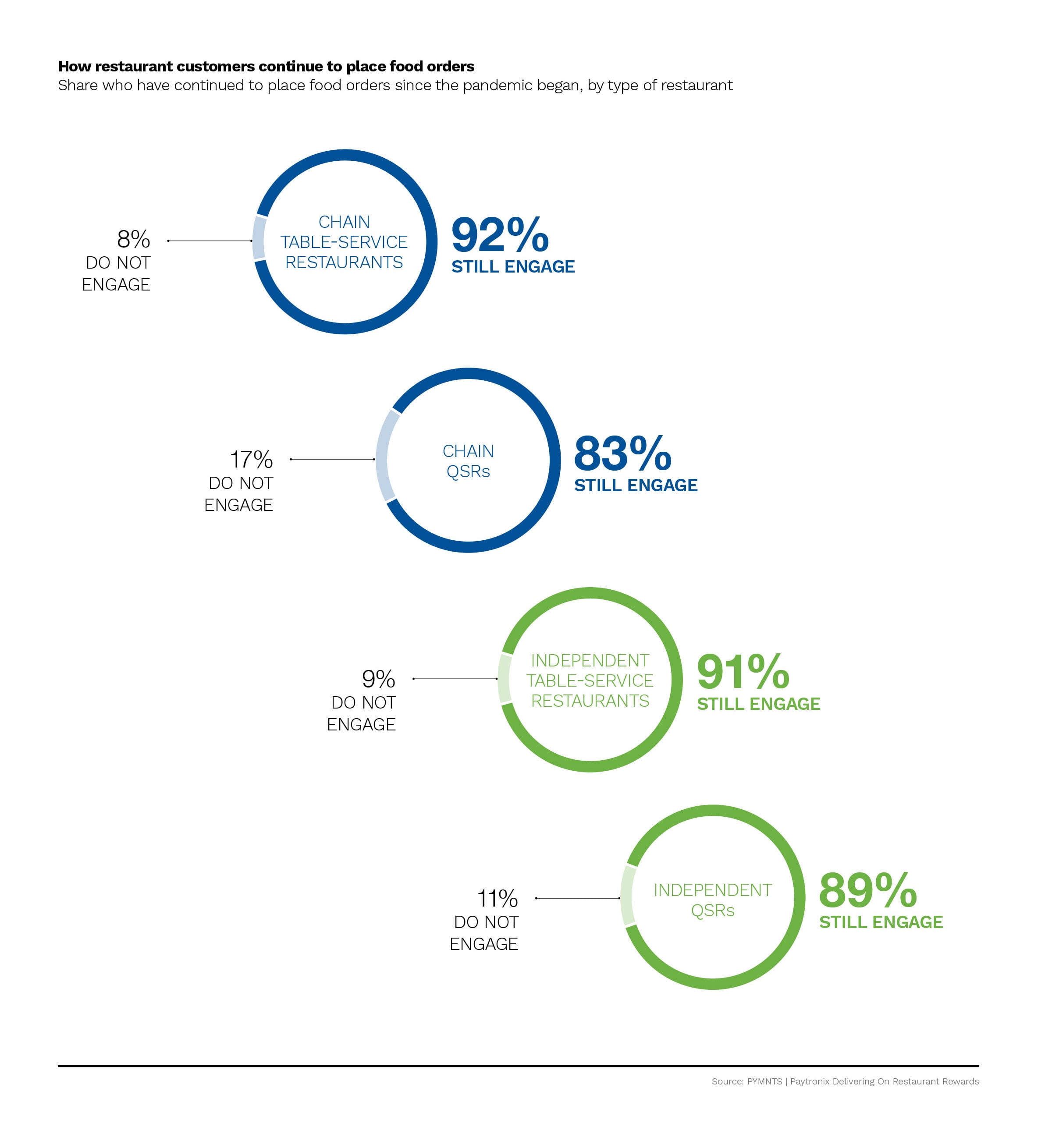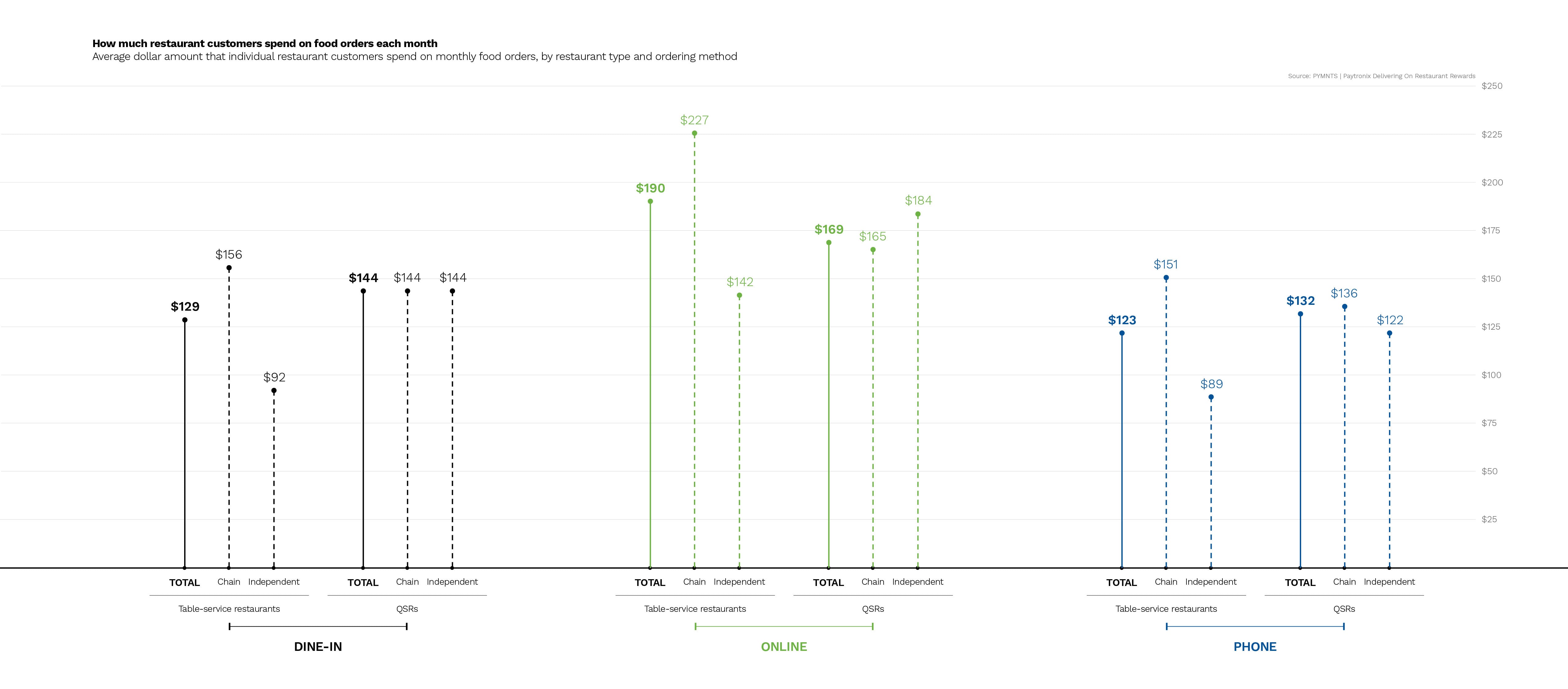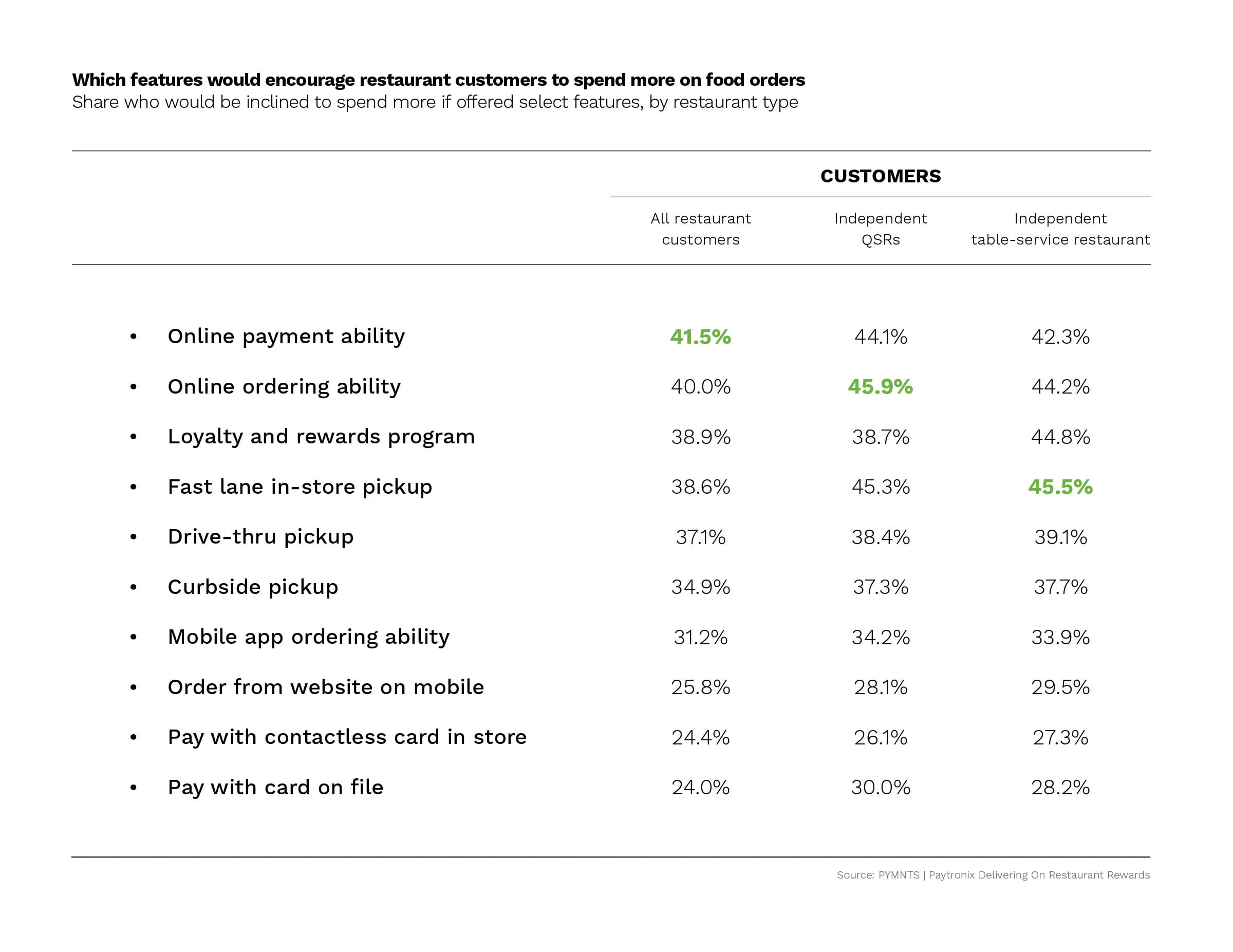
The March 2021 edition of Delivering on Restaurant Rewards, a PYMNTS and Paytronix collaboration, fifth in this special series, probes how independent restaurants in the U.S. have either walked off the painful COVID hit — or walked off the stage entirely because of it.
Asking a census-balanced panel of more than 2,100 U.S. consumers about food ordering routines here in the new normal, PYMNTS added granular detail to what we all know anecdotally: sit-down restaurants — and even some quick-service restaurants (QSRs) — are passing through an extinction-level event. Systems decisions made now will decide the future for most of them.
The need is urgent. Per the new study, nearly 9 percent of consumers who ordered from sit-down restaurants before the pandemic have stopped doing so, as have 11 percent of consumers who ordered from independent QSRs before COVID. It’s a similar story in sit-down chain restaurants, where engagement has dropped close to 8 percent. “Chain QSRs stand out for having lost more of their customers than any other restaurant type since the pandemic began,” per Delivering on Restaurant Rewards, as 17 percent of those who were ordering from chain QSRs now aren’t.
 Diners Spend More When Indies Serve up Digital
Diners Spend More When Indies Serve up Digital
People abandoned seated dining in battalions as the pandemic tightened its grip, leaving a fundamentally changed restaurant sector in its wake. And while the disrupted revenues and shuttered businesses are real enough, the digital shift is having some useful effects on food.
Noting that 81 percent of independent QSR customers and 79 percent of sit-down restaurant customers report placing at least some of their food orders online, the latest edition of Delivering on Restaurant Rewards found a silver lining: Digital diners spend more.
With digital ordering “a universal necessity among all restaurants, even nationally recognized brands with hundreds of locations and local delis that seat only a few diners at a time,” PYMNTS researchers found that “independent restaurant customers who order online spend more per month than those who order and dine on-site, regardless of whether they order from independent QSRs or independent sit-down restaurants.”
On average, an independent QSR customer who orders online spends $184 on food orders per month — fully 50 percent more than what’s spent by independent QSR customers ordering via phone — and 62 percent more than the amount spent by those ordering and dining on-site.
This picture only improves with seated dining, as Delivering on Restaurant Rewards found that “independent sit-down restaurant customers who order online spend $142 per month on online food orders, by comparison. This is 60 percent more than the amount spent by independent sit-down restaurant customers who order over the phone and 54 percent more than what is spent by those ordering and dining on-site.”
 Advantages to Beefing up Digital Loyalty
Advantages to Beefing up Digital Loyalty
Restaurants are pursuing loyalty initiatives with vigor as consumers continue to report a high affinity for experiences that value them by adding real value to the relationship. This is another area where sit-down dining establishments have room to grow and the opportunity to delight customers at a time when retention is turning into a daily battle of inches.
According to the latest Delivering on Restaurant Rewards report, “Independent sit-down restaurant customers are more likely than any other group to spend more on food orders if offered loyalty and rewards programs. Forty-five percent say that loyalty and rewards programs would encourage them to spend more on their food orders — more than those who cite any other feature.” It makes a powerful case for the kind of personalized, touchless redemption experiences that people expect from loyalty programs in the app era.
PYMNTS found the inverse to be true among indie QSR customers, with 46 percent saying they’d spend more if placing orders online, and 44 percent saying they would spend more if paying online.
Digital ordering, in-app meal budgeting and other features all rate with the restaurant crowd, suggesting that the nation’s indie eateries need to up aspects of their game in a hurry.
